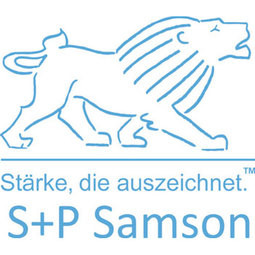下载PDF
Fully Automated Identification for Alping Italia

技术
- 功能应用 - 远程监控系统
- 网络与连接 - 射频识别
- 可穿戴设备 - 补丁标签
适用功能
- 流程制造
用例
- 流程追踪
挑战
完整的材料可追溯性确保了生产过程的可靠性,它是制造企业取得经济成功的重要组成部分。为了优化生产管理,带有印有条形码的标签的自动识别系统现在越来越多地用于生产设施和仓库。这确保了从原材料接收到产品完成和运输的完全控制。尤其是钢铁行业,环境恶劣,确保材料完全可追溯性的标签必须能够承受极端条件。原材料和产品表面粗糙。此外,数据载体暴露在巨大的热量和严重的污染中。最后但并非最不重要的一点是,整个识别过程总是必须在时间压力下进行。
客户
意大利阿尔卑斯山
关于客户
Alping Italia成立于1998年,其核心业务是开发工业自动化领域的定制系统。这家创新公司的创始人已经担任了十年的顾问。 Alping Italia 拥有约 30 名员工
解决方案
对于如此具有挑战性的环境,GRAPHIPLAST® 标签和标签被证明是理想的解决方案。由特殊软件控制的机器人使用螺柱焊机将销钉焊接到钢上,并附上条形码打印标签。这一切都在 8-10 秒内完成,完全在 Alping Italia 规定的时间要求之内。这种全自动识别系统专为满足钢铁行业的要求而开发。在钢铁制造的各个阶段,诸如耐极热、重污染和更短的生产时间等要求都被纳入概念并得到解决。
运营影响
相关案例.

Case Study
IoT Gateway Enables Faurecia to Improve Traceability for Customers
While Faurecia has a long track record of providing its customers with exemplary products, the increasing need to provide customers traceability for the parts it was producing motivated the company to further support these efforts. The large automotive OEMs expected Faurecia to be able to both track the process of operations and production and to make that information available on demand. For example, customers wanted to know which airbags were added to which cars, as well as detailed data characteristics about how each airbag was installed, including torque and angle of installation.

Case Study
Tray Identification at the Kennametal Drill Plant
Kennametal's high quality drill bits along with their associated aluminium trays where they are arranged go through a thorough cleaning process involving ultrasound, damp and vacuum cleaning processes after machining is performed. Before entering this washing facility, the order documents and the tray are separated and then re-allocated after cleaning. A work step that involves a risk as analyses have shown that, on occasion, trays and order documents were allocated incorrectly after cleaning. Drills went through coating processes that were supposed to be used for a different order. Hence, there was a need to eliminate mix-ups altogether.

Case Study
Tripling Sales with Deacom ERP: A Case Study on Copps Industries
Since 1979, Copps Industries has been a global provider of epoxy resins to various markets. However, the company faced challenges in scaling to meet market demand due to outdated technology and manual workarounds to fill in process gaps. The company relied heavily on people to deliver scalable and repeatable processes, which limited the volume of SKUs manageable by their small team. Copps was also burdened with an outdated disk-operating system (DOS) that no longer supported its business needs, and employees struggled with managing a paper trail of documents. The retirement of two 20+ year veterans further complicated matters, leading to issues with process control and onboarding new employees. Copps Industries needed a solution that would tighten process control, scale with its business, and centralize information for easy access.
Case Study
Advantech Industry 4.0 Solutions, Excellence in Pharmaceutical Manufacturing
União Química, one of the biggest players in Brazil’s burgeoning pharmaceutical industry, was being held back by its reliance on outdated production methods. The firm’s managers found their production lines hampered by a low productivity and a lack of efficient quality monitoring, as well as a lack of remote connectivity enabling easy access to critical production line data. One key distinguishing feature in drug manufacturing is the necessity of carefully documenting each step of the production process for compliance. These strict requirements led pharmaceutical manufacturers to store production information in paper records for future reference, but this approach also made it difficult for production managers to make process improvements.
Case Study
Mirriad Delivers Next-Generation Ad Tech Using AWS
Mirriad, a London-based company, delivers next-generation advertising solutions by using its computer vision technology to naturally place brands in premium video content across TV, online, and mobile channels. The challenge for Mirriad was achieving this intelligent insertion of ads at scale. The company was initially using physical data centers, which proved to be a bottleneck when it came to onboarding big businesses. In addition to fast access to compute capacity, another vital requirement for the company was the ability to use NVIDIA GPUs across multiple regions worldwide.
Case Study
SimData Manager: Centralizing and Standardizing CAE Data for Global Collaboration
The case study highlights three main challenges faced by companies in managing their Computer-Aided Engineering (CAE) data. The first challenge is the need for a central location where all CAE users can manage their data within an enterprise for easy retrieval and full traceability from CAD to CAE, and all versions of CAE to the final report. The second challenge is the lack of standardization in methods used by different engineers, the loss of knowledge when employees leave, and the manual nature of the processes. The third challenge is the difficulty in tracking versions of CAD and CAE models and distributing project data globally, especially for companies with multiple development organizations in different geographic locations.





